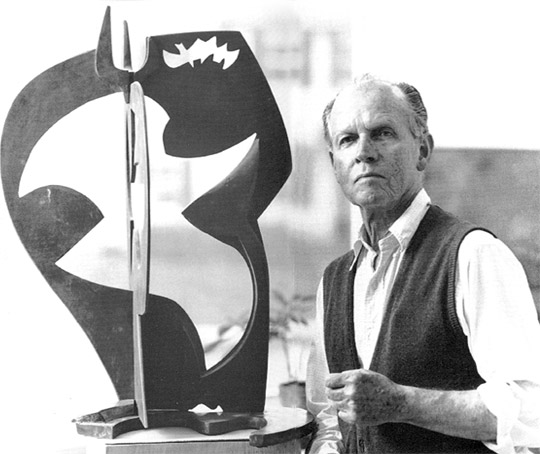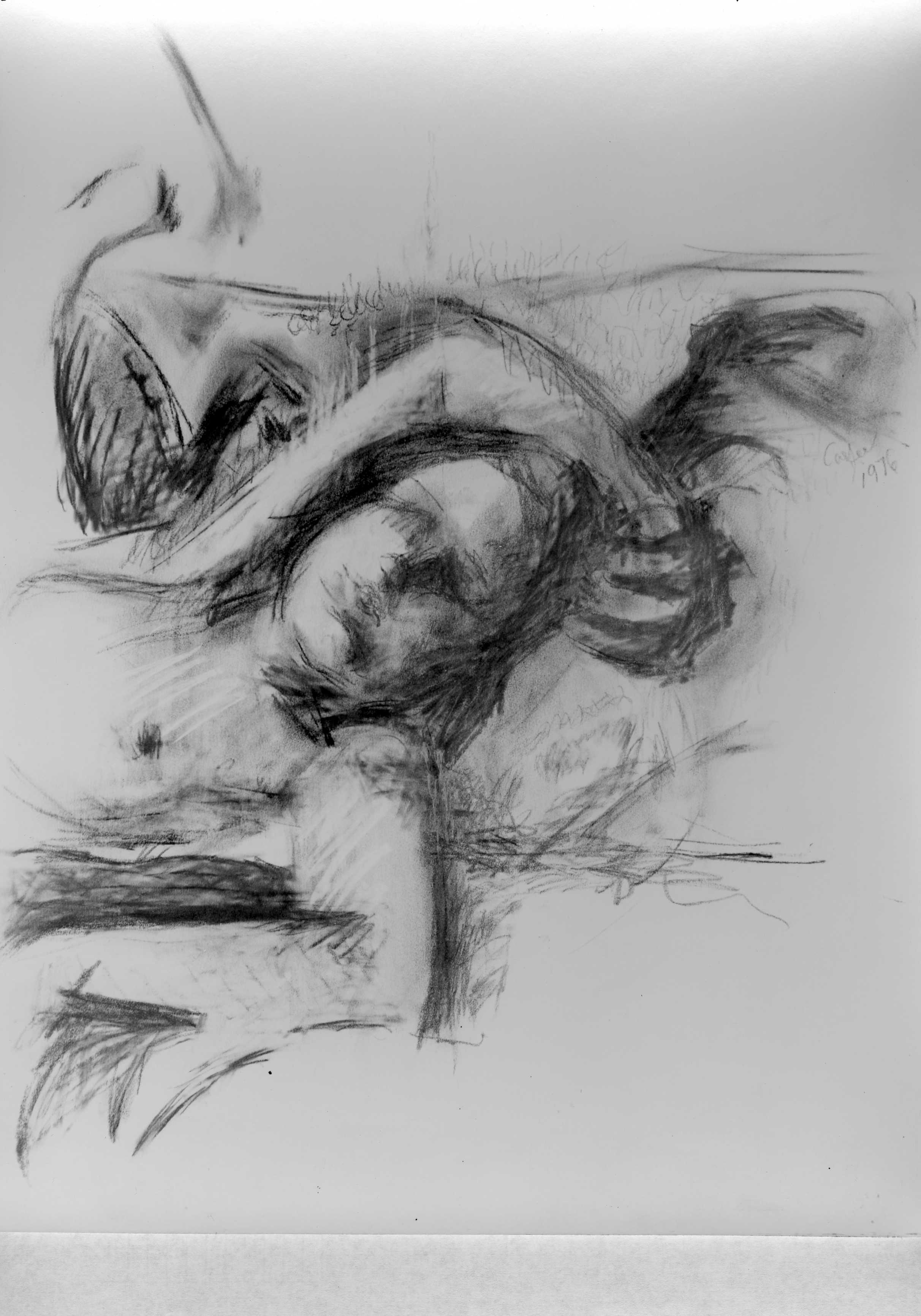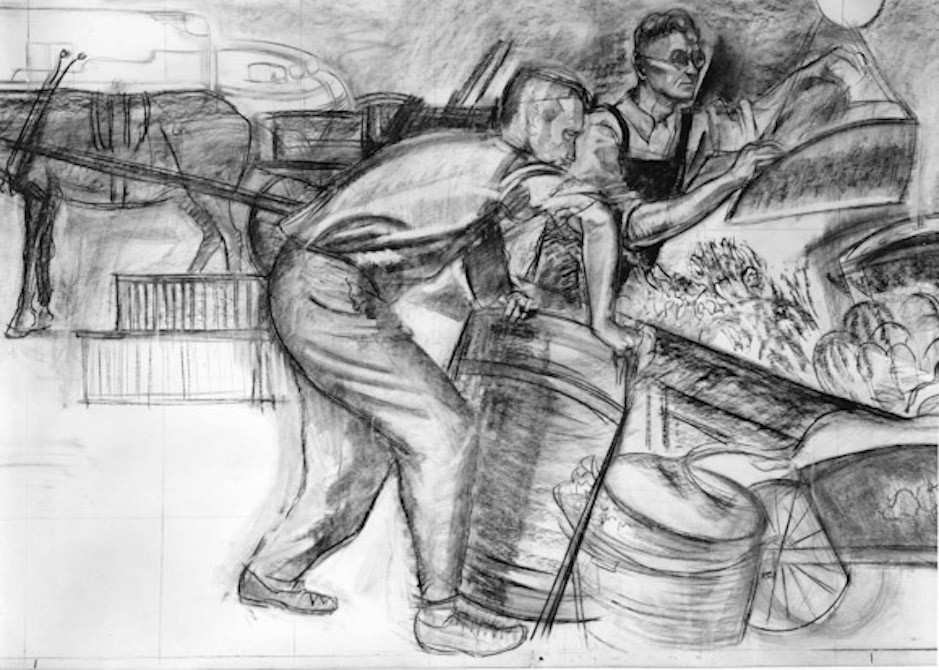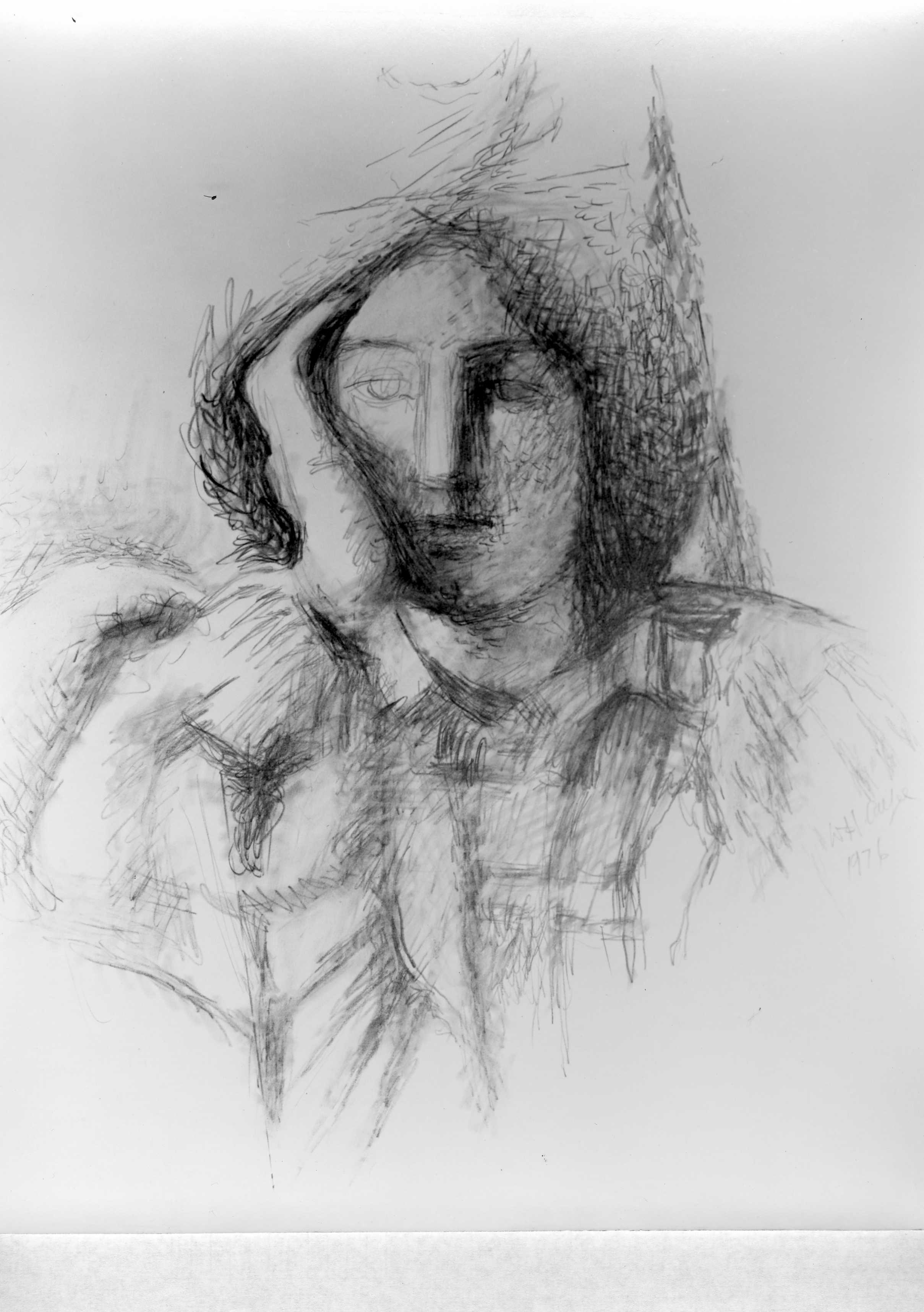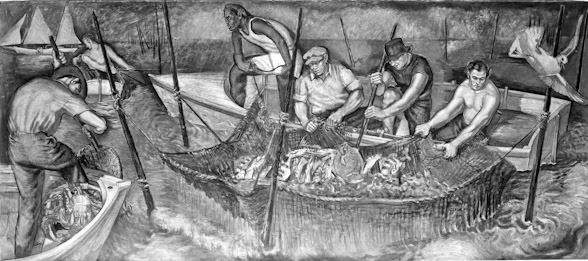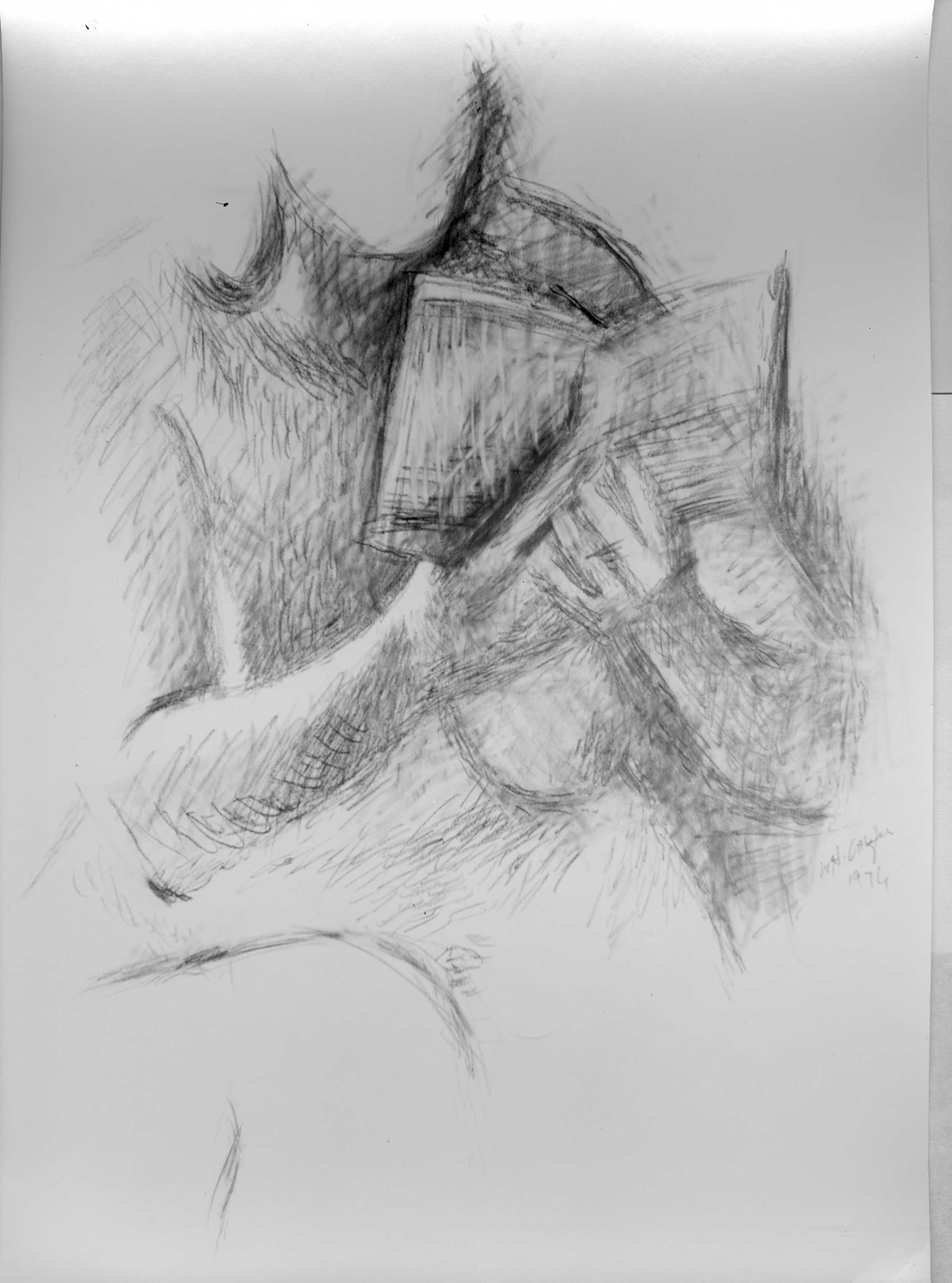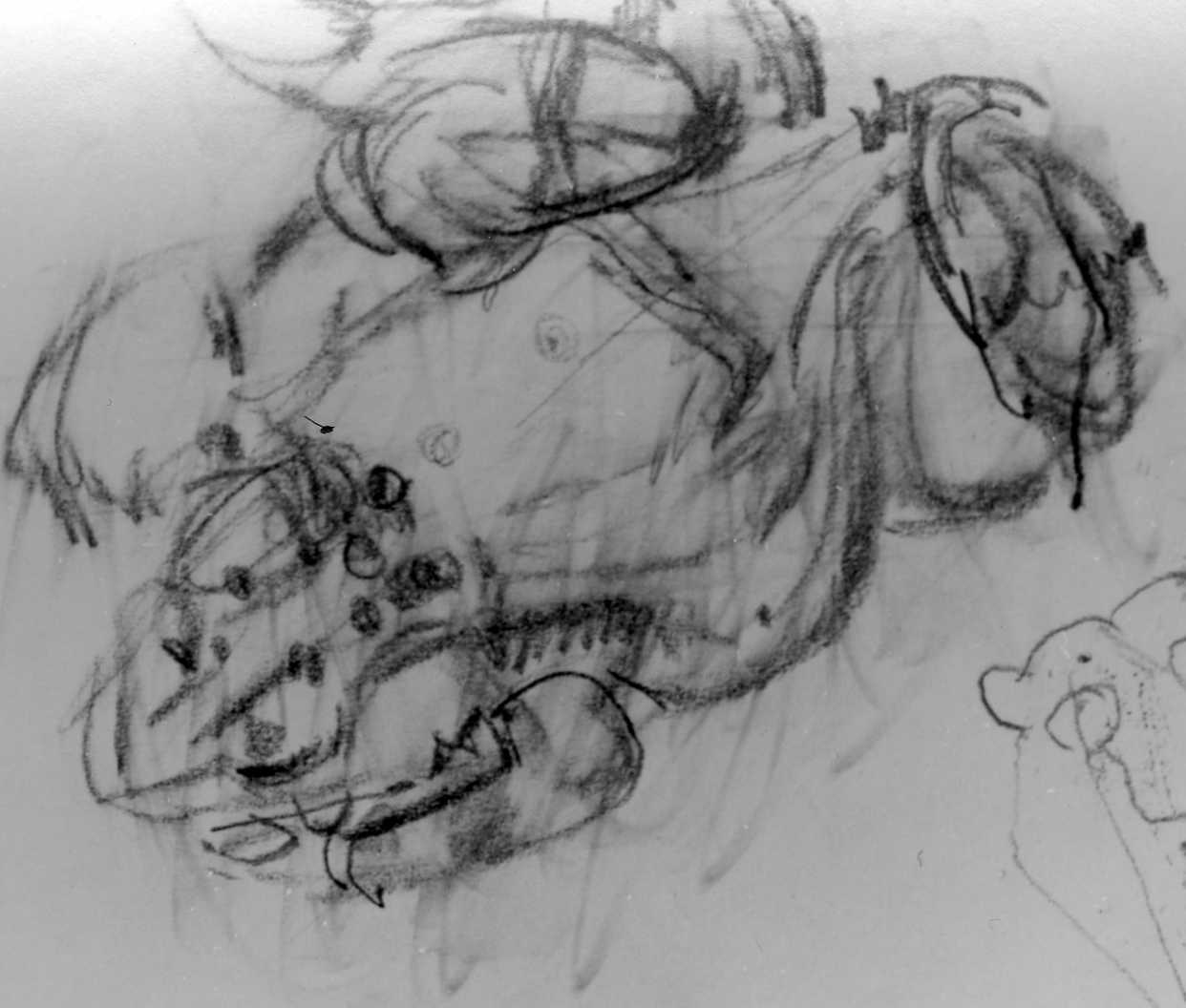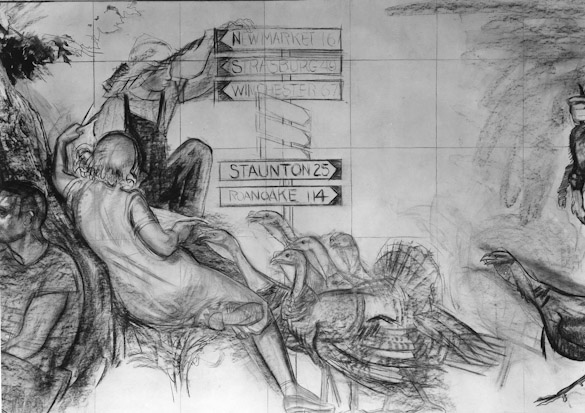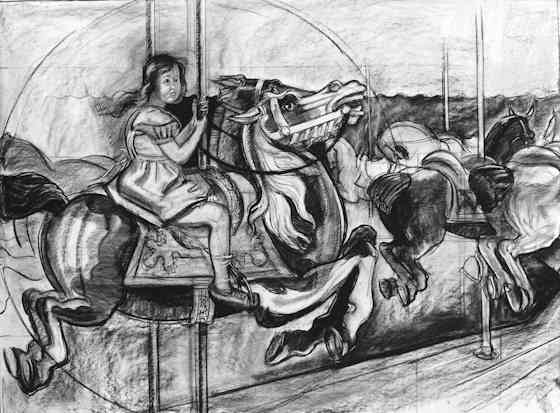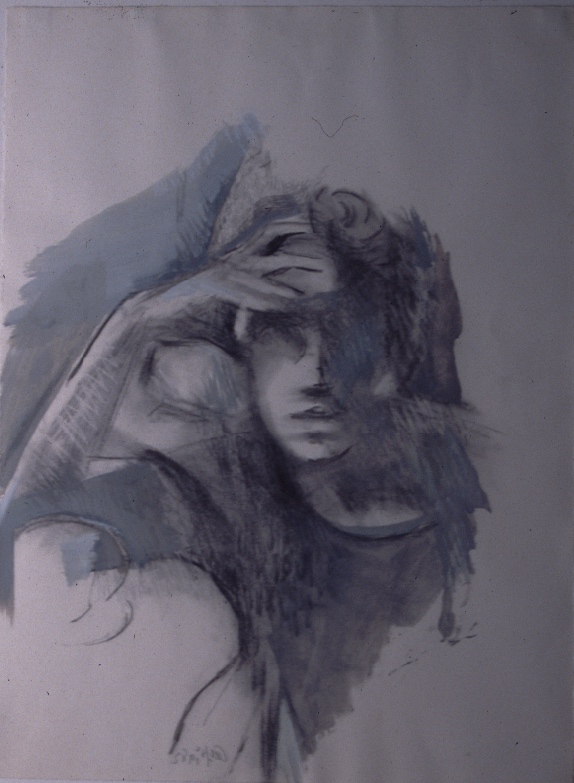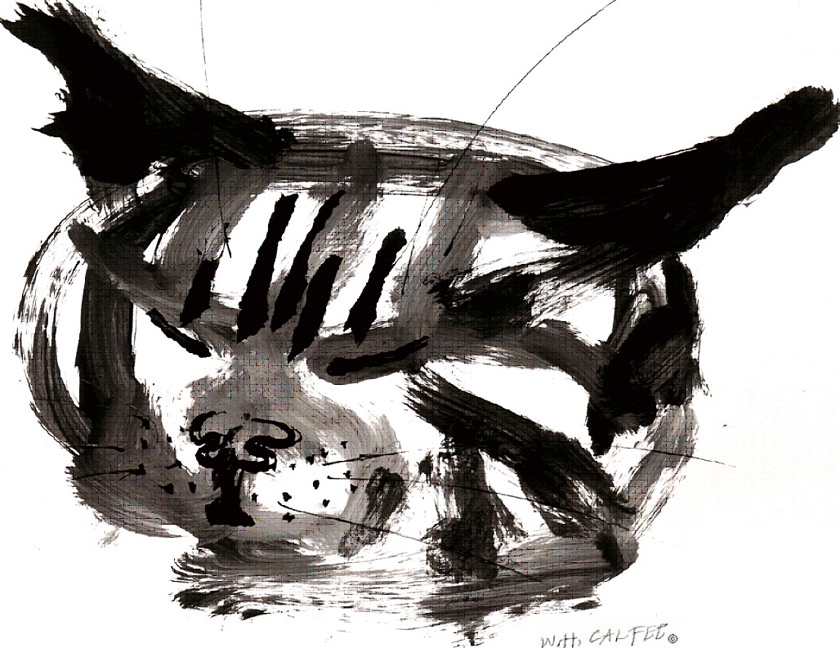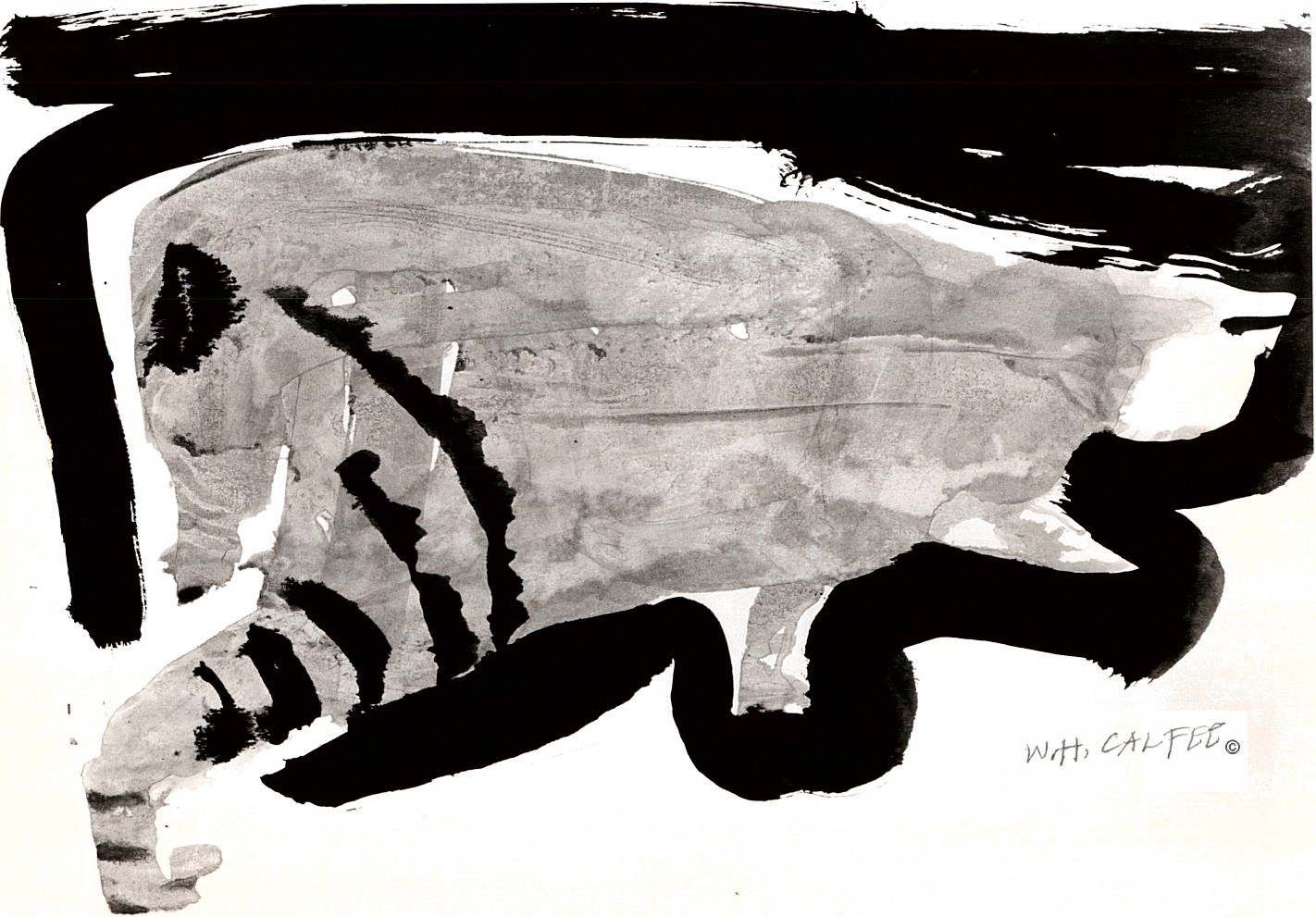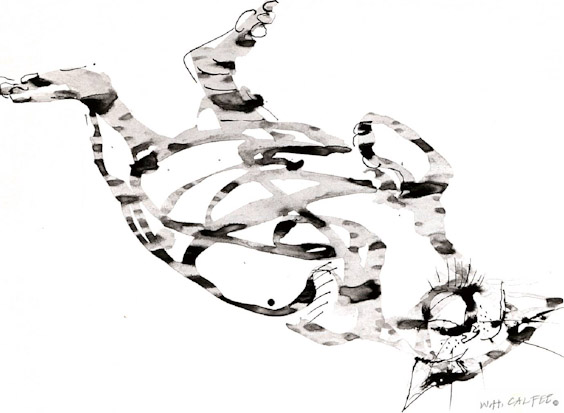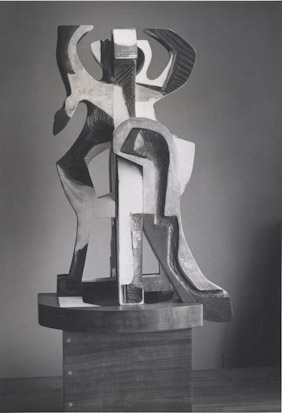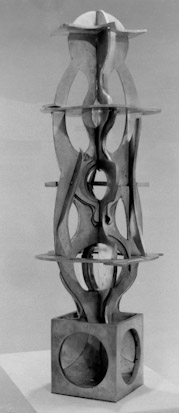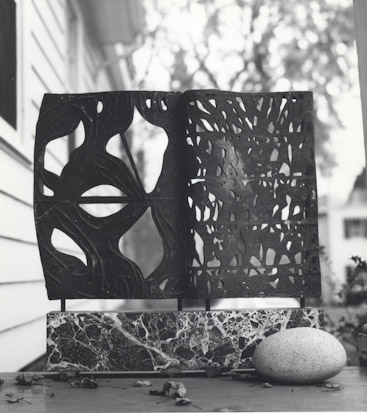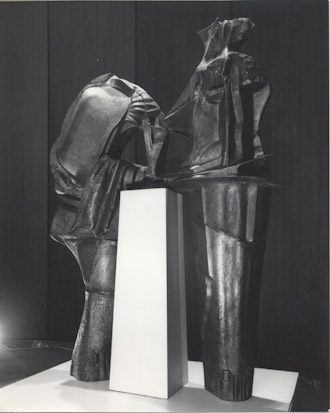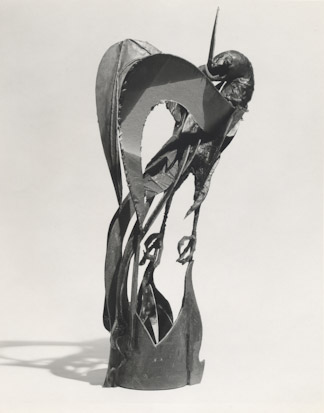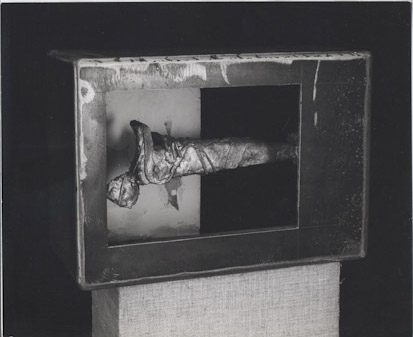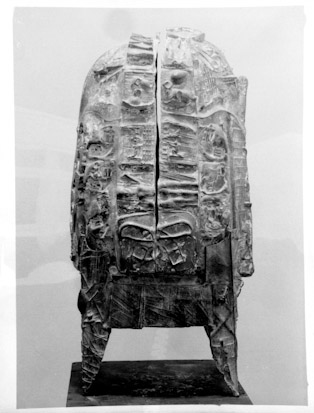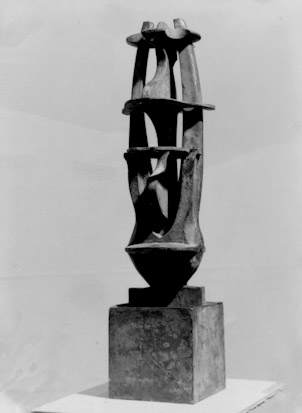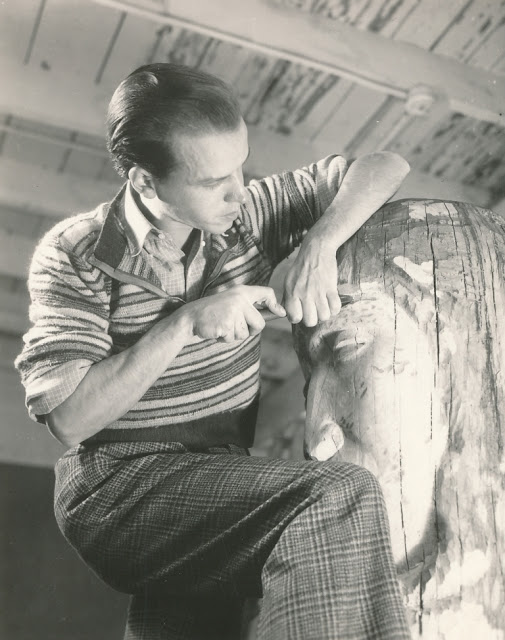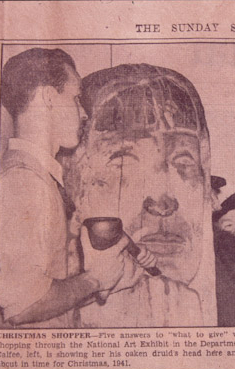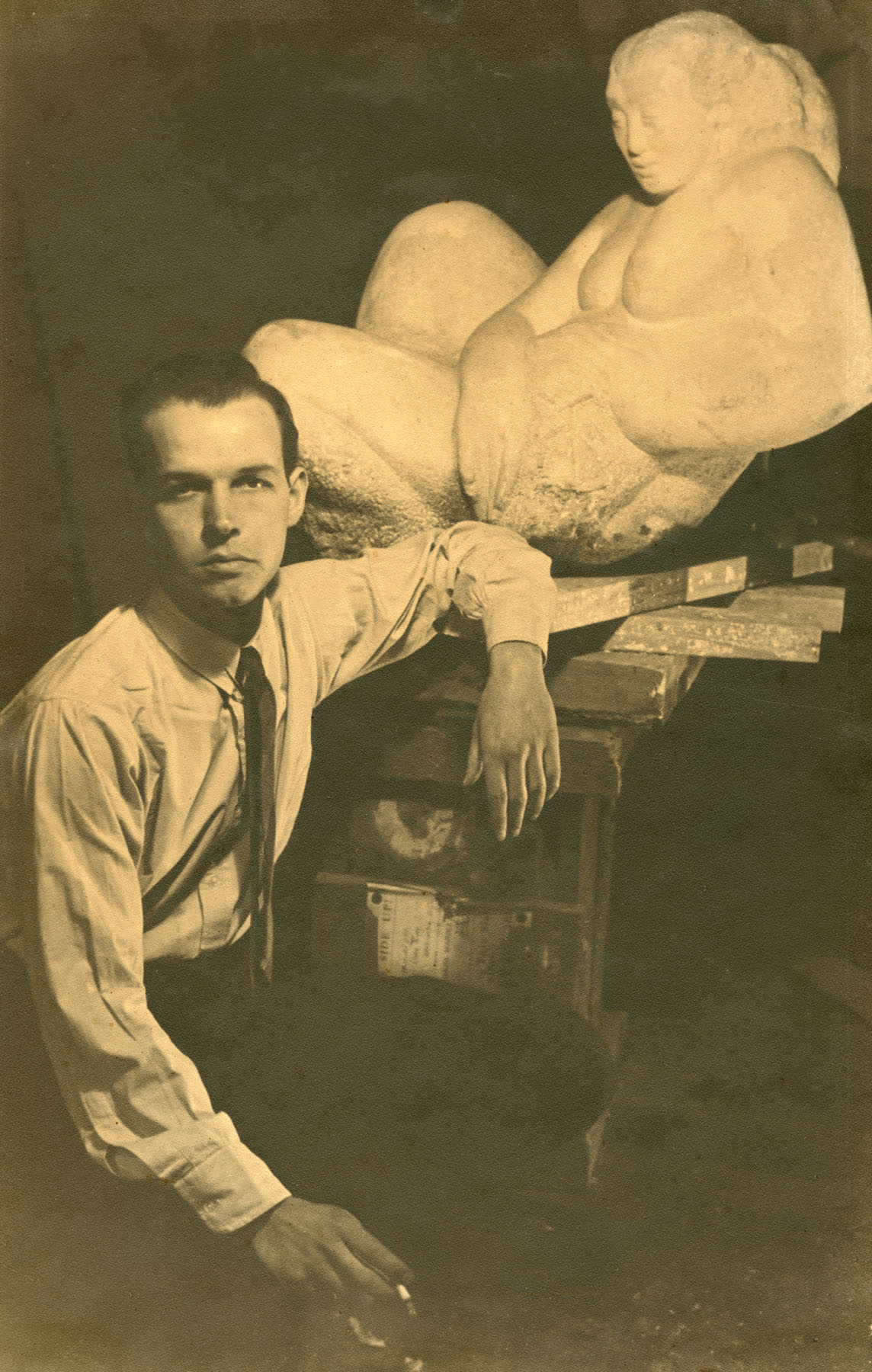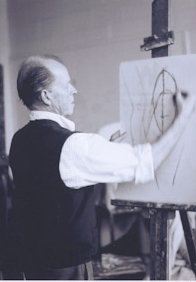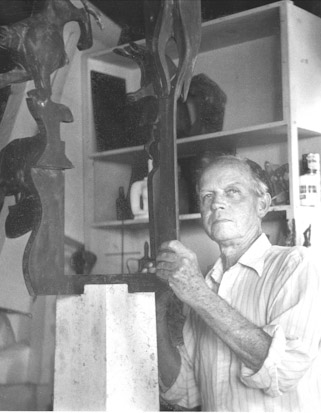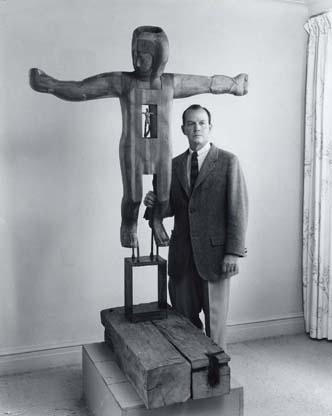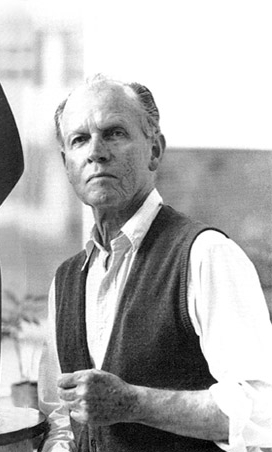Foundation
The William H. Calfee Foundation was established to perpetuate the legacy of artist and educator William H. Calfee (1909-1995), who was chair of American University’s art department from 1945 to 1954. The art department and the artists associated with American University during this period played a pioneering role in the development of modern art in the nation’s capital. They established the Watkins Collection and the Jefferson Place Gallery, which exhibited many contemporary artists during the development of abstract expressionism and post-painterly abstraction. The Calfee Foundation is dedicated to preserving and disseminating knowledge about that period through lectures and exhibitions, and to encouraging younger artists through an annual award for excellence in art.
Artist
William H. Calfee (1909-1995), a native of Washington, D.C., was chair of American University's art department from 1946 to 1954. In the 1920s and 1930s he studied art in France, Italy, and the Cranbrook Academy in Michigan, where he studied under the sculptor Carl Milles. It was there that he experienced the process of producing monumental work and the art of casting bronze. During the Great Depression he produced murals for the Fine Arts Section of the Department of the Interior. The murals can be found today in a number of post offices in Virginia, Maryland, and Delaware. During that time he developed an idiom that was both figurative and abstract. His first solo exhibition opened at the James Whyte Gallery (later known as the Franz Bader Gallery) on December 7, 1941.
Teacher
In the early 1940s Calfee became assistant to C. Law Watkins at the Phillips Memorial Gallery art school, which collaborated with American University in offering a program in fine arts, one of the first in the country. In 1945 he joined Watkins in teaching at the university and became chair of the art department for the next eight years. Calfee, who was soon joined by fellow-artists from the Phillips art school Sarah Baker and Robert Gates, taught the universal principles of art that he discovered in Italian Renaissance fresco painting, but also encouraged innovative experimentation in his students. Classes were also taught by visiting artists such as Karl Knaths, Herman Maril, and Jack Tworkov. Some graduates of the program became faculty members at American University as well as other colleges and universities around the country. Others have gone on to successful careers in the arts. All of them were imbued with the aesthetic principles that were shared by Duncan Phillips and were the basis of his own collection, which opened in 1921 as the first permanent museum of modern art in the United States.
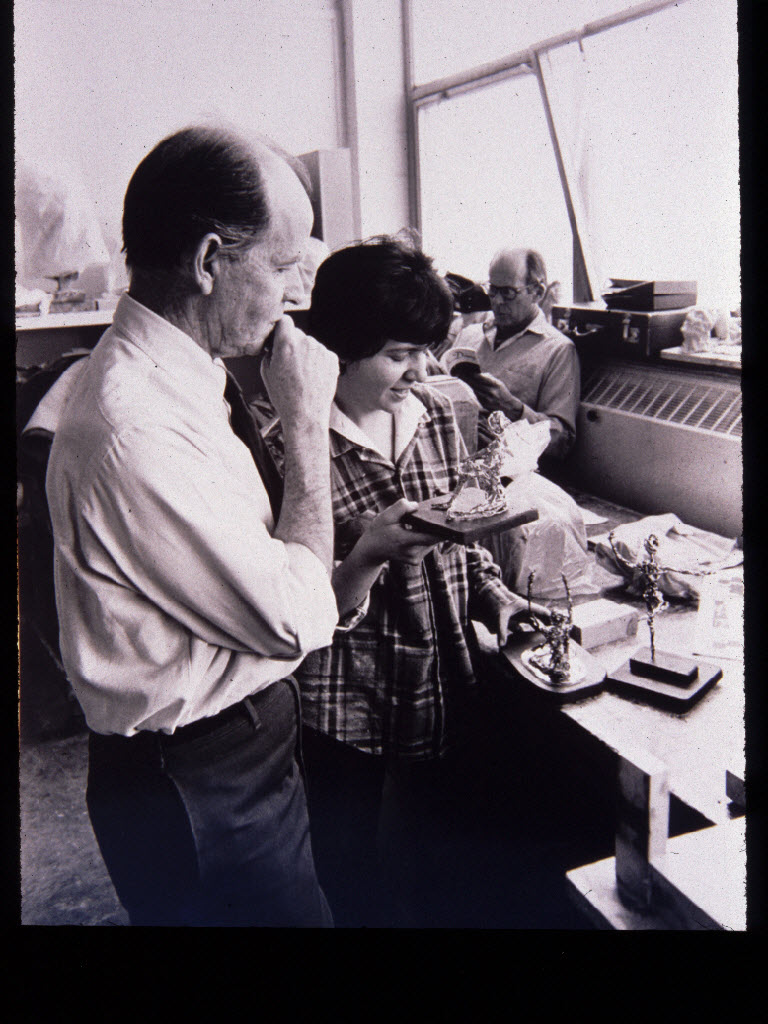

The Jefferson Place Gallery
Calfee, along with other members of American University's faculty, organized the Jefferson Place Gallery near Dupont Circle in 1957. The gallery was organized as a cooperative showing contemporary art in Washington, but also exhibited the work of New York Abstract Expressionists such as Jackson Pollock and Willem De Kooning, along with local artists such as Kenneth Noland, Morris Louis, Gene Davis, Howard Mehring, Sam Gilliam, and Willem De Looper. Calfee was also co-founder of the Watkins Memorial Collection at American University, where he continued to teach for another two decades. One of the best known sculptures from this period is the Monument to Rev. James Reeb, which is dedicated to the civil rights activist whose tragic death contributed to the passing of the Civil Rights Act of 1965. The sculpture was later acquired by the National Academy of Sciences. In 1977 Calfee received an honorary Doctor of Humane Letters degree from American University for his contributions to the university and the community.
Chevy Chase
In the late 1970s Calfee moved from Washington to a large home in Chevy Chase, Maryland, where he lived and worked the rest of his life. During this period Calfee and fellow-artist Patricia Friend organized the Kensington Workshop at which they taught their innovative approach to painting for a number of years. Calfee's works are found in numerous private and public collections, including the Smithsonian American Art Museum, the Corcoran Gallery of Art, the Metropolitan Museum of Art, and The Phillips Collection. His last major public commission was for a monumental abstract sculpture that he completed in 1980 for the Rockville Civic Center in Maryland. Calfee's art, as his life, was based on principles of excellence and quiet dignity.Gallery
Drawings
The sensitive eye is frequently attracted by unusual pattern or color relationships, reflections in a puddle or the cross-section at the base of a head of lettuce exposed routinely in the kitchen; interesting and useful material lies almost everywhere. Any person interested in drawing wishes to develop fresh ways of observing. Fresh observation requires moments of quiet; look passively before drawing, without focusing on any one thing in particular, so that otherwise unnoticed relationships become visible. If you have not already participated in moments of seeing that are different from what we call “ordinary” seeing, moments of openness and inner quiet, you would now endeavor to put aside usual ways of looking and begin again. It is important also to develop your memory of the visual aspects of things so that you can draw without depending on objects. Much in life is there only for a moment.
Gallery
Sculpture
In sculpture, material, the heavy element, touched by hand, quickened by the mind, moves toward form. Material disciplines the sculptor, consuming his time and energy. Also as a helpful collaborator material suggests variations upon every idea. His choices, his emphases, become the sculptor’s statement. The ideas [in my work] have been an exploration and fusion of many influences. The hollowness of bronzes and the strange caverns or suspended fragments in ancient castings are acknowledged. I have enjoyed the curious surprise of a mould’s negative image and the possibilities of statues enshrined by packing cases or with forms expanded by shims. Lamination has been chosen because it frees and strengthens wood; it is less prone to crack when hollow. The observed world has offered shadow and reflections as well as the usual relationships of shapes, while the inner world has opened memory’s treasure and suggested evocative palcement in space or unexpected accent.
Gallery
William H. Calfee
To see freshly avoid contouring and identifying objects immediately. Instead of outlining objects (which isolates them) make careful notes about shape relationships, relationships that disregard not only the subject but positions in space. A line in the foreground, for instance, may have a discoverable continuation on an object deep in space; or a triangle of particular shape and size may recur in several variations. Recording these sorts of observations binds pieces of each object into new shapes and thus into a surface pattern.
One approach to such observation is to expand from a nucleus; after the eye takes in the entire area and you find what you intend to include , begin drawing only a small area, exploring it much more carefully than you would normally have time for. From this expand outward into larger areas.
It is important also to develop your memory of the visual aspects of things so that you can draw without depending upon objects. Much in life is only there for the moment!
Donate
Please help us nourish a vibrant arts community. Your donation will go a long way.
Your support will help us sponsor educational lectures, conserve and share the works of William H. Calfee, develop educational media like this website and many more activities that reflect the creative legacy of William H. Calfee.
You can click on the DONATE button and make a secure donation using paypal or any major credit card. The William H. Calfee Foundation is a 501 c3 qualified under the IRS rules as a tax deductable charity.
You could also donate to the William H. Calfee scholarship fund being held by American University to perpetuate our scholarship program for young artists.
Contact us anytime
